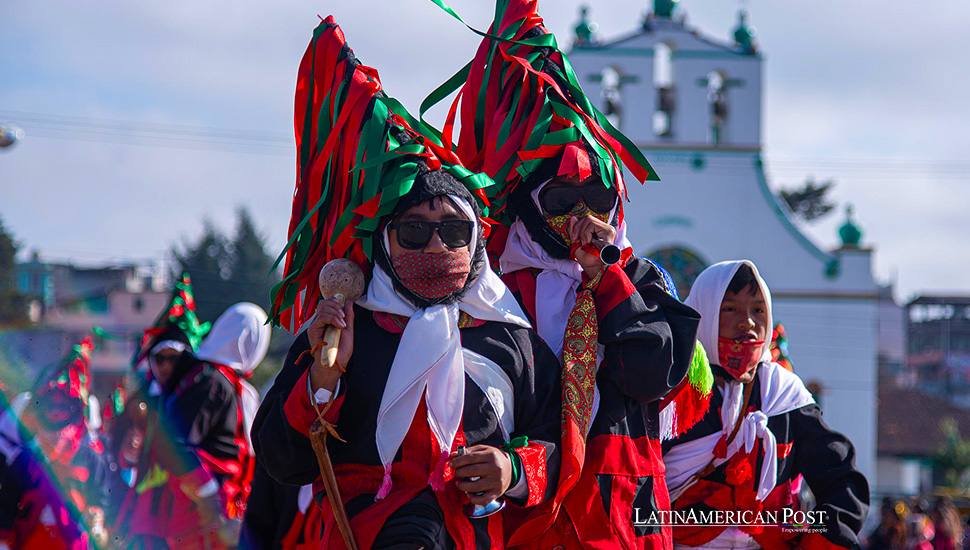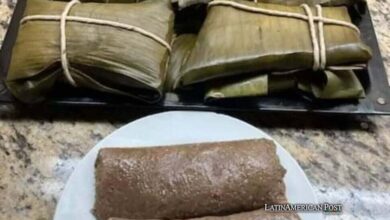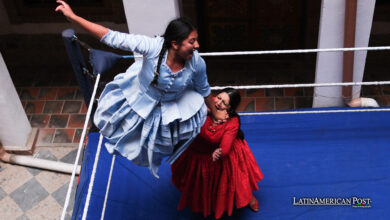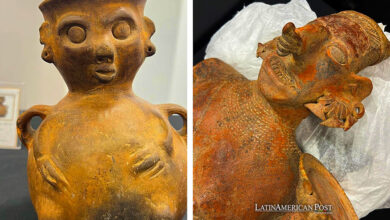Preserving Heritage: Exploring Mexico’s Rich Tzotzil Tradition at Carnaval K’intajimol

Nestled in the heart of Chiapas, Mexico, the Tzotzil indigenous people recently concluded their vibrant Carnaval K’intajimol, a celebration deeply rooted in the ancient Mayan worldview, honoring the earth, cosmic energy, and the Holy Burial of Christ. Beyond its colorful festivities lies a rich tapestry of history and tradition, spanning centuries of cultural resilience and spiritual reverence.
The Ancient Roots: Mayan Ceremonies and Cosmic Beliefs
The origins of Carnaval K’intajimol trace back to the pre-Columbian era, where Mayan communities marked the transition between the old and new calendar years with elaborate ceremonies. These rituals, deeply intertwined with agricultural cycles and cosmic beliefs, served as a means of appeasing deities and ensuring bountiful harvests. The Mayans revered it profoundly for nature, viewing it as sacred and imbued with divine energy. Their calendar, known as the Haab’, consisted of 18 months of 20 days each, with an additional period of five “lost days” or “wayeb’.” These days, considered a liminal time outside the regular calendar, were regarded as precarious and often associated with adverse events. However, they also held significance as a transitional period, marking the passage from one year to the next.
Following the Spanish conquest, indigenous traditions like K’intajimol underwent a process of syncretism, blending Mayan cosmology with Catholic influences. The incorporation of Christian elements, such as the veneration of the Holy Burial of Christ, reflects the complex interplay between indigenous beliefs and colonial imposition. Spanish missionaries sought to Christianize indigenous populations by integrating Catholic practices into existing rituals, a strategy aimed at facilitating conversion while preserving aspects of indigenous culture. Consequently, many indigenous festivals, including Carnaval K’intajimol, acquired Christian symbolism while retaining their original spiritual significance.
Indigenous Resilience and Cultural Evolution
Over the centuries, Carnaval K’intajimol evolved into a multifaceted celebration encompassing spiritual devotion, communal bonding, and artistic expression. Today, the festival stands as a testament to the resilience of indigenous cultures in the face of colonization and modernization, preserving ancient traditions for future generations to embrace and cherish.
Carnaval K’intajimol holds profound cultural significance for the Tzotzil people as a cornerstone of their identity and heritage. For centuries, the Tzotzil have inhabited the highlands of Chiapas, maintaining a deep connection to the land and a rich oral tradition passed down through generations. At the heart of their worldview lies a profound reverence for nature, embodied in rituals and ceremonies that seek to harmonize human existence with the universe’s cosmic forces.
The festival embodies the interconnectedness of the spiritual and material worlds, blurring the boundaries between past and present, human and divine. Through elaborate dances, music, and offerings, participants honor their ancestors, invoke blessings from the gods, and reaffirm their place within the cosmic order. The colorful costumes, symbolic gestures, and rhythmic movements symbolize the Tzotzil worldview, conveying complex spiritual concepts in tangible form.
Reciprocity and Sacred Bonds: The Essence of Carnaval K’intajimol
Central to Carnaval K’intajimol is reciprocity, whereby humans offer gratitude and reverence to the natural world for sustenance and abundance. The rituals seek to maintain balance and harmony within the community and the broader cosmos, acknowledging the interdependence of all living beings. Through acts of devotion and sacrifice, participants reaffirm their commitment to upholding the sacred bonds that unite them with the earth and the divine.
In recent years, Carnaval K’intajimol has taken on renewed significance as a symbol of indigenous resistance and cultural revitalization. In the face of ongoing threats to their ancestral lands and traditions, the Tzotzil people have mobilized to safeguard their cultural heritage and assert their rights as indigenous peoples. The festival is a platform for political advocacy, artistic expression, and community empowerment, galvanizing support for indigenous land rights, environmental conservation, and social justice.
As globalization encroaches upon traditional ways of life, events like Carnaval K’intajimol take on added importance as bastions of cultural preservation and autonomy. Amidst modernity and economic development pressures, indigenous communities face the challenge of balancing tradition with adaptation and innovation with conservation. Carnaval K’intajimol offers a space for dialogue and exchange, where elders pass down ancestral knowledge to younger generations and traditional practices are reinterpreted in light of contemporary realities.
A Symbol of Resistance: Carnaval K’intajimol Today
In an increasingly interconnected world, the significance of indigenous cultures like the Tzotzil extends far beyond their local communities. As stewards of ancient wisdom and guardians of biodiversity, indigenous peoples play a vital role in the global struggle for environmental sustainability and cultural diversity. By celebrating events like Carnaval K’intajimol, we honor the resilience and creativity of indigenous cultures and affirm our shared responsibility to protect and preserve the rich tapestry of human heritage for generations to come.
Also read: Unearthing Colonial Life Through New Discoveries at Peru’s Real Felipe Fortress
Carnaval K’intajimol stands as a testament to the enduring vitality of indigenous cultures in the face of centuries of adversity. Through its vibrant colors, rhythmic dances, and profound symbolism, the festival embodies the resilience, creativity, and spiritual depth of the Tzotzil people. As we celebrate the rich tapestry of human diversity, let us commit ourselves to preserving and promoting indigenous rights, cultures, and traditions, ensuring that events like Carnaval K’intajimol continue to inspire and uplift future generations.





